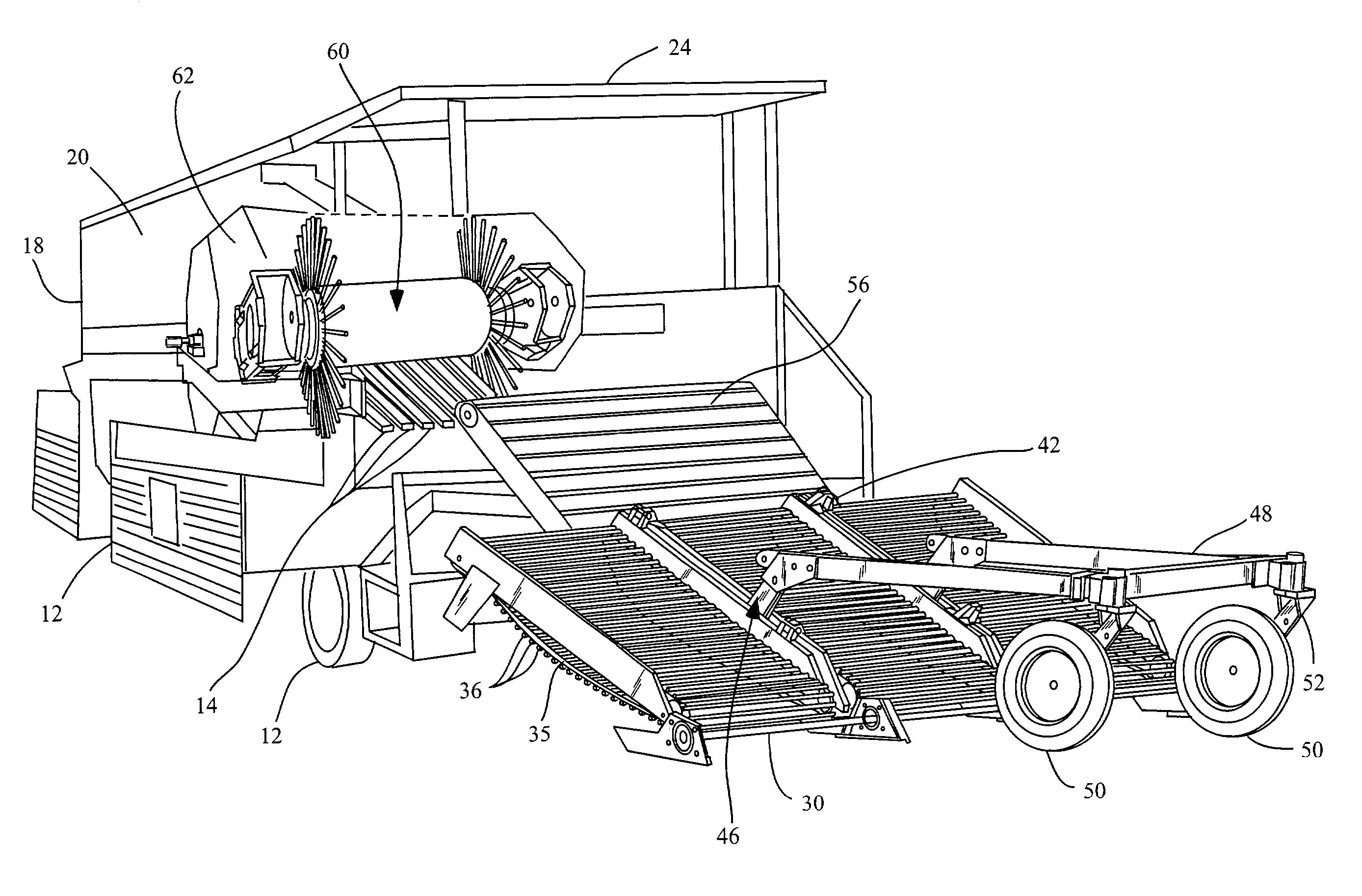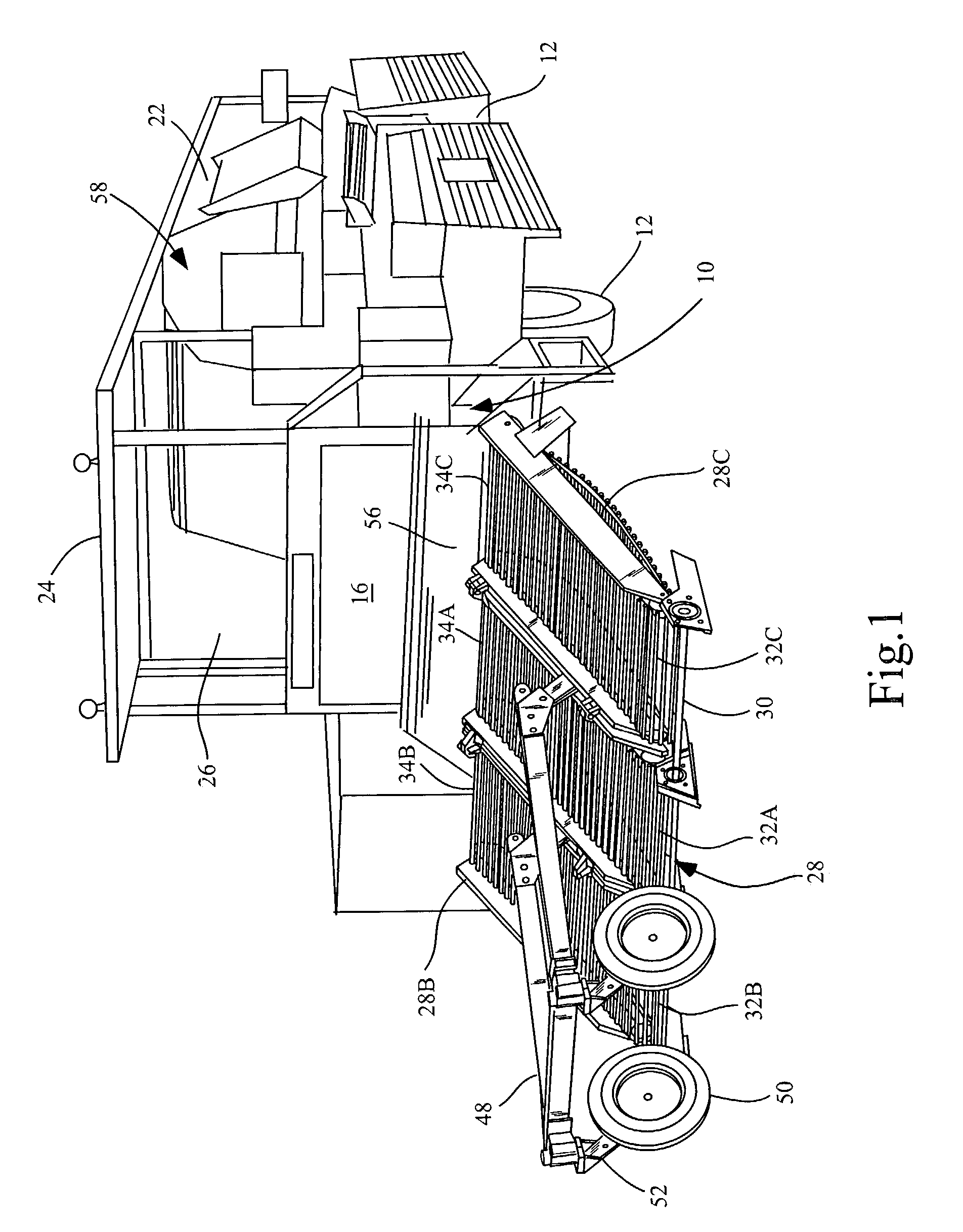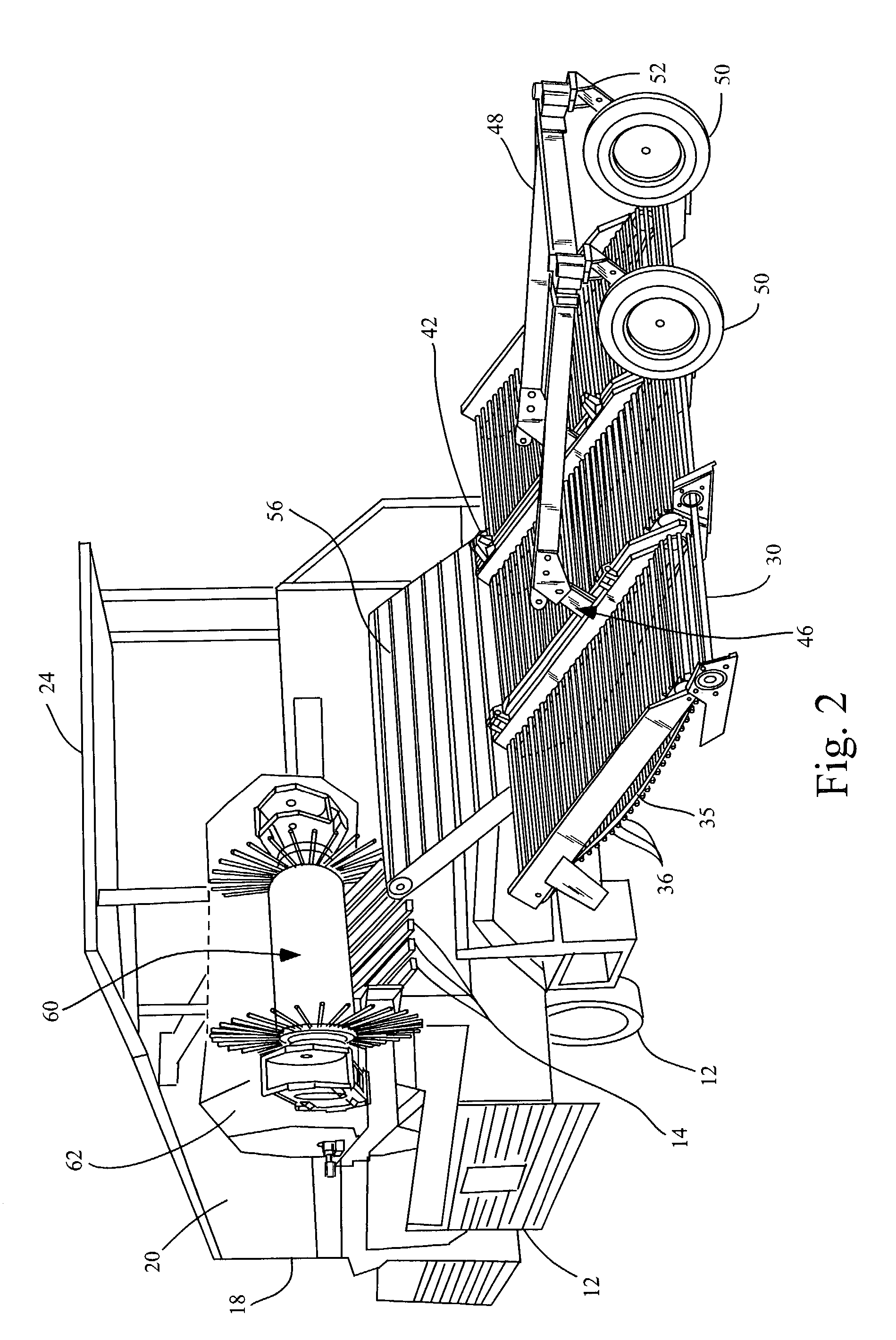Tomato harvester
a harvester and tomato technology, applied in the field of tomatoes, can solve the problems of similar crops, no known harvester which harvests tomatoes, and no means to disclos
- Summary
- Abstract
- Description
- Claims
- Application Information
AI Technical Summary
Benefits of technology
Problems solved by technology
Method used
Image
Examples
Embodiment Construction
[0038]As used in this Description, the terms “left” and “right” are with respect to an operator's point of view, looking forward from the operator compartment of the harvester.
[0039]Referring now to the drawings, FIGS. 1 and 2 generally depict the multiple-row features of the improved harvester. The present invention includes a frame 10, ground engaging wheels 12, and an engine (not shown) for propulsion and other power requirements. The frame 10 has a forward end 16, a rear end 18, a right side 20, a left side 22, a center 24, and an operator compartment 26. The device has pick-up means, such as ground-engaging conveyors 28, for transporting crops, vines and other material rearwardly and upwardly on the harvester. The ground-engaging conveyors 28 have severing means, such as cutters 30, at the leading edge of each conveyor. Forward motion of the harvester thrusts cutters 30 below the ground surface where the cutters engage and sever the roots of the crop laden vines or plants. The ...
PUM
 Login to View More
Login to View More Abstract
Description
Claims
Application Information
 Login to View More
Login to View More - R&D
- Intellectual Property
- Life Sciences
- Materials
- Tech Scout
- Unparalleled Data Quality
- Higher Quality Content
- 60% Fewer Hallucinations
Browse by: Latest US Patents, China's latest patents, Technical Efficacy Thesaurus, Application Domain, Technology Topic, Popular Technical Reports.
© 2025 PatSnap. All rights reserved.Legal|Privacy policy|Modern Slavery Act Transparency Statement|Sitemap|About US| Contact US: help@patsnap.com



